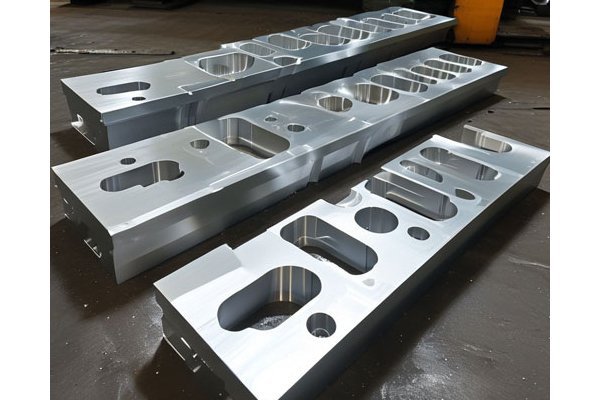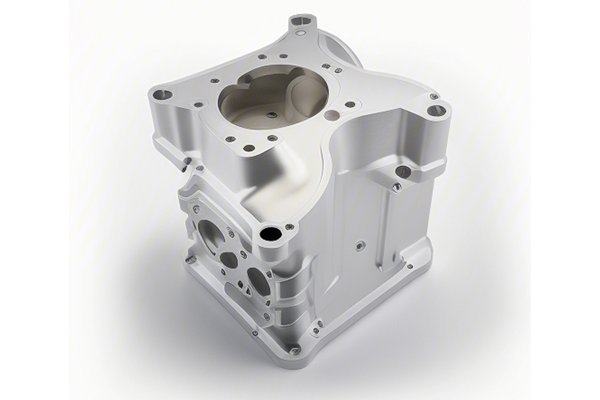Opening
Did you know that the global market for hybrid materials is projected to reach over $300 billion by 2027? This staggering growth signifies not only the increasing popularity of hybrid materials encompassing both plastics and metals, but also their crucial role in modern manufacturing processes, particularly in CNC (Computer Numerical Control) machining. As industries continuously strive for lightweight yet durable components, the right choice of material can make a significant difference. This blog will guide you through the process of selecting the ideal plastic and metal hybrid material for your CNC prototypes, ensuring a perfect balance of performance, cost, and manufacturability.
Understanding Hybrid Materials
Hybrid materials blend the properties of metals and plastics, providing designers and manufacturers with options that maximize the strengths of both. Metals are known for their strength, durability, and high resistance to heat, while plastics offer lightweight, corrosion resistance, and greater flexibility in processing. By combining these materials, manufacturers can create components that meet stringent industry requirements without compromising on performance.
Key Factors in Material Selection
When choosing the right plastic and metal hybrid material for CNC prototypes, multiple factors come into play. These include:
Step-by-Step Guide to Selecting the Right Hybrid Material
Step 1: Define the Application Requirements
Identify the specific requirements of the project, including operational conditions, longevity expectations, and performance standards. A comprehensive understanding of the workflow and application will inform your material choice.
Step 2: Conduct a Material Property Analysis

Research and compile data on the mechanical and thermal properties of available plastic and metal options suitable for hybrid manufacturing. Common plastics like polycarbonate, polypropylene, and polyamide may be considered alongside metals like aluminum, stainless steel, or titanium.
Step 3: Evaluate Manufacturing Feasibility
Examine the feasibility of machining the selected materials together. Consider the CNC capabilities in terms of tooling required and potential challenges that may arise during machining, such as tool wear and consistency of tolerances.
Step 4: Conduct Testing and Prototyping
Once a shortlist of materials is identified, proceed with prototyping. Testing the prototypes under real-life conditions provides essential feedback regarding performance, durability, and workability with CNC processes.
Step 5: Analyze Costs and Sustainability
Gauge the total cost of materials, processing, and potential waste. Additionally, it’s essential to explore any environmental factors related to the materials, such as recyclability and carbon footprint, making more eco-friendly material choices when possible.
Case Study: A Practical Application of Hybrid Materials
Consider a company developing lightweight components for the aerospace industry. The ideal choice would be a combination of aluminum and polycarbonate. Aluminum provides the necessary strength while keeping weight low, and polycarbonate offers enhanced durability and resistance to impact. Together, these materials create a robust yet lightweight component perfectly suited for the flight environment. By conducting thorough testing, the company verified performance standards and refined their process, leading to increased efficiency and reduced manufacturing costs.
Selecting the right plastic and metal hybrid material for CNC prototypes is no small feat. However, by following a structured approach that considers mechanical properties, thermal characteristics, cost efficiency, and manufacturing feasibility, companies can ensure successful outcomes when approaching their projects.
In today’s highly competitive landscape, the significance of hybrid materials extends beyond mere innovation; it’s about creating products that align with performance, cost, and environmental consciousness. Remember, the materials you choose reflect your dedication to quality and efficiency. As industries evolve, so too must our understanding and application of these valuable resources. Whether you’re a seasoned engineer or new to CNC machining, considering hybrid materials may be one of the most strategic decisions you can make for your development cycle.
Why It Matters
As manufacturing technologies continue to advance, the choice of materials will determine the success of engineering projects. We must stay informed and adaptive to the growing landscape of hybrid materials for CNC machining. The blog’s insights on material selection serve as valuable guidance, ensuring you remain at the forefront of manufacturing excellence. The choices you make today could very well shape the industry tomorrow.
—






